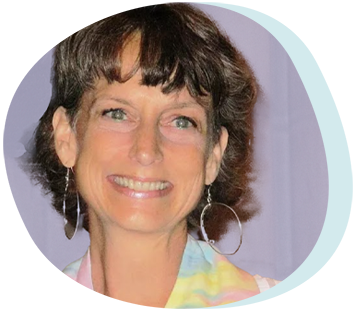Written by: Rev. Andrea “Ani” Vidrine, LCSW
Enneagram theory holds that there are three primary ways that humans interact with the world: through the mind, through the heart, and through the body. The mind is the seat of our concepts, beliefs, and judgments and a reified sense of self. The heart is our relational center where we experience empathy, compassion, and love for self and others. The body is the center for action and houses the felt sense of life and the traumatic memories from the past.
Let’s take a look, from this perspective, at what happens when an individual (you and me) gets upset and reactionary in everyday life.
The first center to experience a sense of being triggered in life circumstances is the body through the fight, flight, or freeze response. This activation occurs because you feel threatened or your body senses danger, whether actual or perceived. Before the mind and heart centers can come back into alignment, the body must experience a sense of safety.

With this in mind, the primary task when triggered is to do what is needed to make you feel safe, then to cultivate the relaxation response. This is accomplished through becoming mindfully present in the moment, no small task when you don’t feel safe. Several strategies utilizing tactile cues can assist you in developing the ability to be mindfully present when activated, such as taking a time out (leaving the circumstance), taking deep breaths and consciously relaxing your body, rubbing a rock or other object in your pocket, snapping a rubber band on your wrist, getting a drink of water, or whatever brings you back to the here and now.
From this present moment awareness, you can ask yourself what you need to feel safe and give yourself what you need. Maybe you need to go for a walk or to do something more vigorous to discharge some energy and to allow yourself time to calm down. Perhaps you need to take a bath or a nap to zone out for a while. Maybe playing or listening to music, singing, or engaging in other artistic endeavors will provide needed distance from the situation. Perhaps time in nature, watching a movie, or participating in a sports activity will support your nervous system returning to equilibrium. Establishing safety is not the same as problem-solving. Rather, it is about attending to the body’s need to return to balance.
Once the body center is no longer in fight, flight, or freeze mode, you can do the introspection needed to ponder the circumstance and how you want to proceed. Questions that may facilitate clarity for you are:
- What am I feeling?
- Whom am I blaming for my feelings? Whom am I judging?
- What is the story that I am telling myself about this person/event? How might this viewpoint be skewed?
- If I took an objective, compassionate perspective, what might that be?
- What do I want, in regards to this situation? Where is my agency (power) in this situation and over what do I have no control? What is mine to do?
- If I imagined manifesting the highest version of myself in this situation, what would that be? What deeply held beliefs might be getting in my way?
- What virtue/s do I need moving forward?
Once you have an objective perspective, clarity, and a quiet mind, you will have the ability to allow your heart to open in compassion for yourself and others, if you value the peace that an open heart brings. In reality, you may not want to open your heart because there may be some unconscious beliefs that are yet to be discovered preventing you from having that desire. Regardless, the possibility of opening your heart to yourself and others will be present when your body and mind centers are in a state of equilibrium. Without this integration, it will not feel safe to open your heart.
The positive consequences of integrating the mind, heart, and body centers when you are triggered are self-evident when you engage in the practices, but don’t take my word for it. Begin today to practice mindful awareness, to attend to the body’s needs for equilibrium, to notice, name, and inquire, and to relax and open to the fullness of life. It is only then that you will know if this integration truly works Register for the author’s upcoming CE workshop to learn more about the enneagram.
About the Author
Rev. Andrea “Ani” Vidrine, LCSW serves as a licensed clinical social worker, spiritual director, enneagram mentor, and interfaith/interspiritual minister. She has provided continuing education for counselors through TPN, the NASW/Louisiana chapter, the Louisiana Association for Spiritual, Ethical, and Religious Values in Counseling, and dietitians through the Council on Renal Nutrition. Ani currently serves on staff at The Shalem Institute for Spiritual Formation in Washington, D.C. in their Spiritual Guidance program. For more information, please visit her website at www.alovecenteredlife.com.


Rev. Andrea “Ani” Vidrine, LCSW
